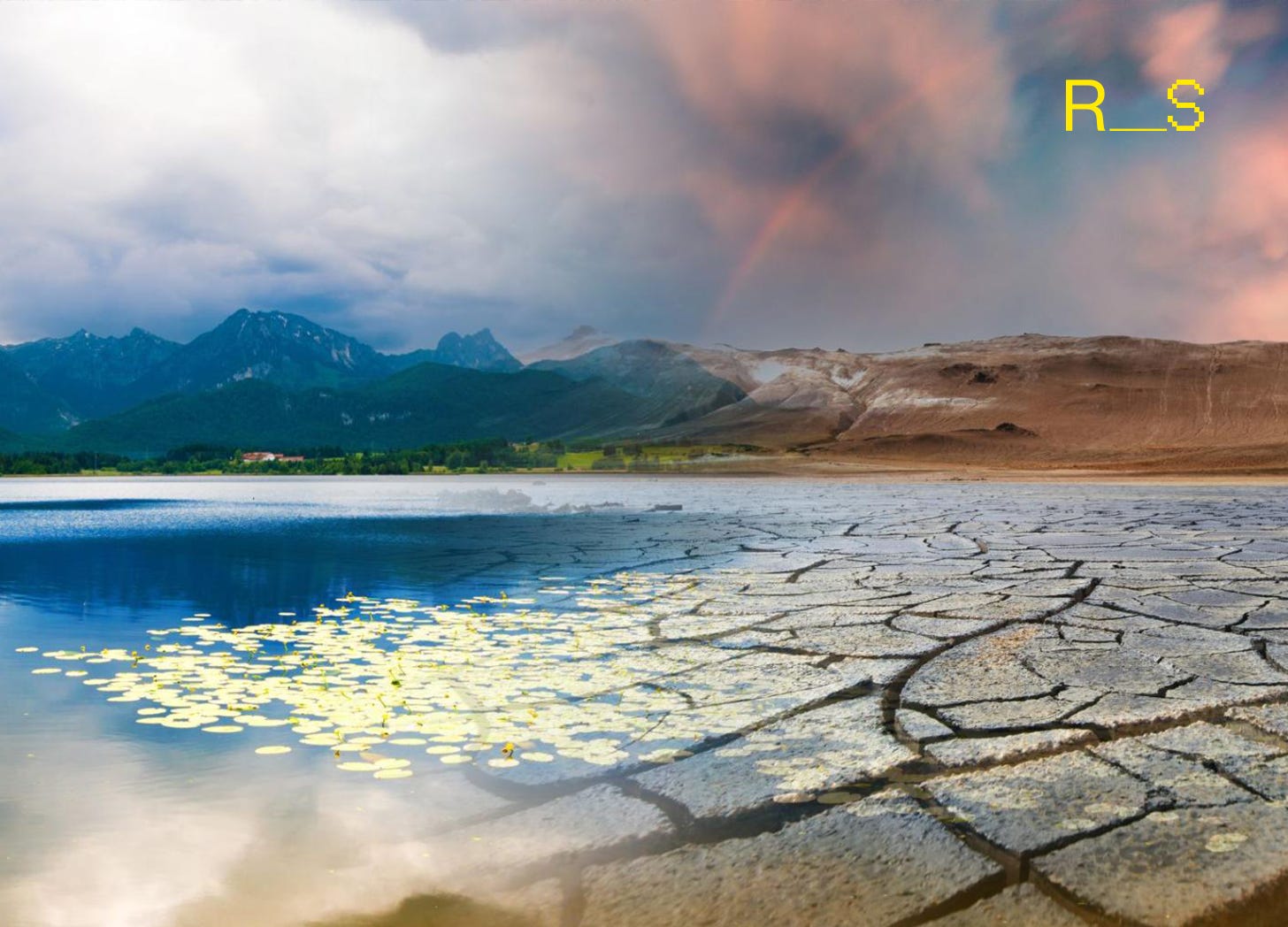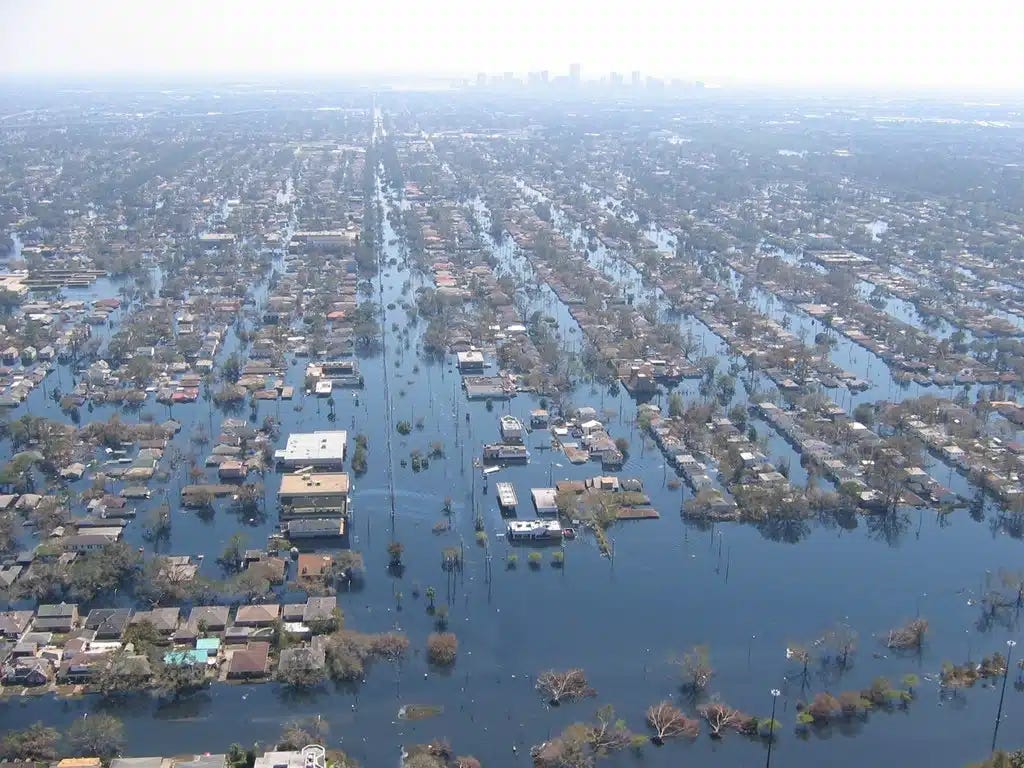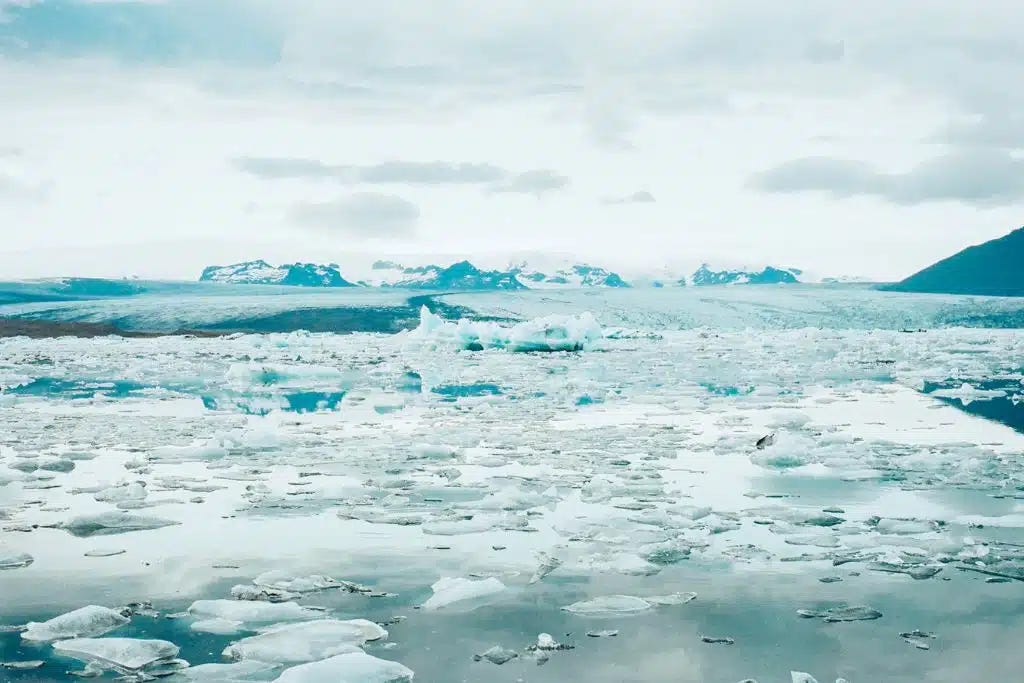Hot Planet Update: 2024 Hottest Year in 800,000 Years, 'Eternal' Glaciers Melting, Greenpeace's Courtroom Blow, Ocean Carbon Capture, EPA Scientific Research Scramble, & More
A roundup of what happened, why it matters, and key context for climate change news during the week of March 16-22.
Welcome to “Hot Planet Update,” a series on Reality Studies that recaps the biggest news in climate from the last week. Using a “smart brevity” format, Last Week in Climate recaps are designed to keep you up-to-date on the latest news and provide key context.
The first half of each HPU is available for free subscribers, and the full post is available to paid subscribers. Subscribe now so you never miss an installment!
1. Climate “wake-up call” from record 2024 data
👉 Earth’s vital signs hit alarming highs last year, says the UN weather agency.
The World Meteorological Organization’s new climate report confirms 2024 was Earth’s hottest year on record, with CO₂ levels the highest in 800,000 years, and ocean heat and sea levels at all-time highs. These “distress signals” are signs of human impact, some of which are deemed “irreversible over hundreds if not thousands of years,” the report warns.
Arctic sea ice shrank to its lowest extents and Antarctic ice hit record lows, underscoring dramatic changes at the poles. Each of the last eight years set a new record for ocean heat content, reflecting the oceans’ immense uptake of excess warming.
Why it matters: The unprecedented figures are a stark reality check. Scientists say these trends are accelerating climate extremes and will fuel more dangerous weather, unless global emissions are curbed fast. The WMO calls the 2024 findings a “wake-up call” for humanity to act on climate change before these changes compound beyond our control.
MUD\WTR: Right now, get 30% off on starter packs using this link.
There’s four different adaptogen blends to choose from, but my current favorite is :rest, which helps me ramp down from long days and feel ready for sleep.
2. Climate disasters displace record numbers
👉 Extreme weather fueled by warming led to the most new displacements of people in 16 years.
In the same report (as above), The UN weather agency claimed that 2024’s extreme floods, storms, and droughts forced more people from their homes than any year since at least 2008. Globally, 605 major disaster events were recorded, from mega-cyclones to massive wildfires, leading to 824,000 new displacements and roughly 1,700 deaths.
Warmer temperatures are driving more frequent and intense events. Notably, 148 of last year’s disasters were deemed “unprecedented” in magnitude or timing. Entire communities in vulnerable regions were uprooted by floods in Asia and Africa, while prolonged droughts in places like the Horn of Africa also triggered migrations.
Why it matters: The spike in climate-related disasters is not just breaking records—it’s upending lives. With each fraction of a degree of warming, the toll on communities rises, straining humanitarian response and resources. The trend underscores how climate change is increasingly a human displacement crisis, not just an environmental one.
David Guignion: The History of Conspiracy Theories, Making Philosophy Accessible to the Public, Activism, & More | #43
Welcome to the Urgent Futures podcast, the show that finds {signals} in the noise. Each week, I sit down with leading thinkers whose research, concepts, and questions clarify the chaos, from culture to the cosmos.
3. Courtroom blow to pipeline protestors and Greenpeace
👉 A $660 million judgment against Greenpeace raises the stakes for climate activism—and critics fear a chilling effect.
In a landmark verdict, a North Dakota jury found Greenpeace liable for defamation and other claims related to its role in protesting the Dakota Access Pipeline—and hit the environmental group with $660 million in damages. The case was brought by Energy Transfer, the pipeline’s operator, which argued that Greenpeace’s campaigning against the project went too far and caused the company harm.
Legal experts say the stunning win for the pipeline company (co-founded by a prominent Trump donor) will embolden other oil and gas firms to sue activists who oppose their projects. “This verdict will embolden other energy companies to take legal action against protesters who physically block their projects,” noted Michael Gerrard, the founder and faculty director of the Sabin Center for Climate Change Law at Columbia Law School, warning that it could deter people from joining environmental protests for fear of massive liability.
Greenpeace and its allies argue the lawsuit is an example of a SLAPP (Strategic Lawsuit Against Public Participation) meant to intimidate critics. The $660M penalty—if it stands on appeal—could bankrupt activist organizations and discourage civil disobedience against fossil fuel infrastructure.
Why it matters: As governments wrestle with climate policy, battles are also playing out in court between activists and energy companies. This verdict marks an escalation, using civil litigation to potentially silence protest. It highlights a growing tension: activists see urgent moral stakes in stopping pipelines, while companies are increasingly ready to fight back in court and seek astronomical damages. The outcome may set a precedent for how far protesters can go—or be punished—in the climate fight.
4. “Eternal” glaciers melting away
👉 UN data show glaciers and ice that once seemed permanent are vanishing within our lifetime.
A new UN-backed analysis reveals glaciers are retreating at an unprecedented pace—five of the last six years saw the fastest glacier loss on record. Since 1975, glaciers outside Greenland and Antarctica have lost over 9 trillion tons of ice (for reference: that amounts to an ice block the size of Germany 25m thick). At this rate, what were once called “eternal” ice fields could disappear by the end of this century.
Polar sea ice is in decline as well: the Arctic has logged its 18 lowest sea-ice extents in the past 18 years, and Antarctica hit its three lowest ice extents in just the last three years. These rapid changes threaten global sea levels and water supplies for millions who rely on glacier melt.
Why it matters: Fast-melting glaciers are a visible indicator of climate change, shrinking water resources in Asia and South America and raising oceans worldwide. Scientists warn that loss of these natural ice reserves will have cascading effects on ecosystems, agriculture, and natural hazards like floods and sea-level rise in coming decades.
5. Turning the tide with ocean carbon capture
👉 Entrepreneurs are experimenting with the sea as a giant carbon sponge—with big dreams and bigger questions—according to new AP report.
A wave of startups and scientists is racing to test ocean-based carbon removal, an experimental approach to fight climate change by enhancing the ocean’s natural ability to absorb CO₂. Ideas range from sinking special rocks or iron nutrients into the sea, to growing masses of carbon-hungry seaweed, all aiming to lock away greenhouse gases for centuries underwater. Nearly 50 ocean field trials in the past four years have attracted hundreds of millions in funding for these techniques.
Advocates say cutting emissions won’t be enough by itself—we also need to pull carbon out of the atmosphere, and the oceans cover 70% of the Earth’s surface, offering a huge arena to do so. By chemically altering seawater or boosting phytoplankton, these projects hope the ocean could act “like a vacuum” for CO₂, drawing down excess greenhouse gas from the air.
But the approach is controversial. Scientists worry about side effects like altering ocean chemistry or marine ecosystems, and critics argue these efforts are moving too fast with “too few guardrails” in place. Large-scale unknowns (i.e., could adding minerals harm sea life? Will the carbon stay put long-term?) remain unanswered.
Why it matters: As climate impacts worsen, interest in carbon removal is surging. If safe and effective (big ifs!), ocean-based CO₂ capture could become a powerful tool to help reverse warming. But getting it wrong could introduce new environmental problems. The world is watching these trials to see if this high-tech ocean engineering can deliver climate benefits without upsetting the marine balance.
Mission Farms CBD: My favorite CBD, full stop. They farm the hemp organically on a small Oregon farm, tend every plant by hand, and test for purity four times: the soil, the hemp, the hemp-extract, and the final products.
Go to this link and sign up for emails to get 25% off + free shipping on your first order.








